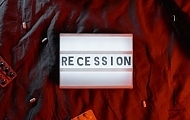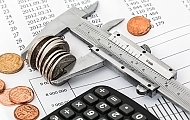By using our website, you agree to the use of cookies as described in our Cookie Policy
Blog
Recession or No Recession?
The leading economic index (LEI) has been suggesting an imminent recession for quite some time, as has the yield curve inversion. However, labor market and gdp data are nowhere near recession territory at the moment. It could be that a recession will come in 2024, which would be later than was expected. Or perhaps the post-pandemic economy is an exceptional circumstance to which old rules do not apply.
A third recession indicator has not signaled recession. Barry Ritholtz interviewed Claudia Sahm, known for the Sahm Rule. The Sahm Rule states that if the three-month average of the national unemployment rate is at least 0.5% greater than the lowest of these three-month averages over the last 12 months, then the US is in a recession. This rule has so far been perfect since the 1970s, as it’s only triggered early in a recession and never triggered outside of one. The intent behind the Sahm rule is for it to serve as an automatic trigger for enhancing relief programs at the beginning of a recession, instead of having to wait for Congress to take legislative action. At this point, there’s no legislation implementing increased aid via the Sahm Rule, so this proverbial canary in the coal mine remains unused.
It's probably not quite fair to directly compare the LEI and the yield curve to the Sahm Rule, as the first two suggest an approaching recession in the coming months, whereas the Sahm rule typically triggers in the early stages of a recession.
Sahm herself speculates that the COVID-disrupted economy could break the Sahm Rule; typically, unemployment rises about 4 percentage points after the Sahm Rule triggers, but she conjectures that the unemployment rate could rise to over 4%, linger there long enough to trigger the Sahm Rule, and then come back down. Her argument is that while economists frequently looked to the 1970s and 1980s to understand the economy under high inflation, because we have a lot of data from that era, the COVID-disrupted economy may be more akin to post World War I (which also had a pandemic) and World War II economies.
Will we have a recession in 2024? It’s possible, but most indicators should be taken with a dose of salt. And if you want a single, simple indicator that could perceive the early stages of a recession, the labor market may be the best place to look.
###
JMS Capital Group Wealth Services LLC
417 Thorn Street, Suite 300 | Sewickley, PA | 15143 | 412‐415‐1177 | jmscapitalgroup.com
An SEC‐registered investment advisor.
This material is not intended as an offer or solicitation for the purchase or sale of any financial instrument or investment strategy. This material has been prepared for informational purposes only, and is not intended to be or interpreted as a recommendation. Any forecasts contained herein are for illustrative purposes only and are not to be relied upon as advice.
‹ Back











